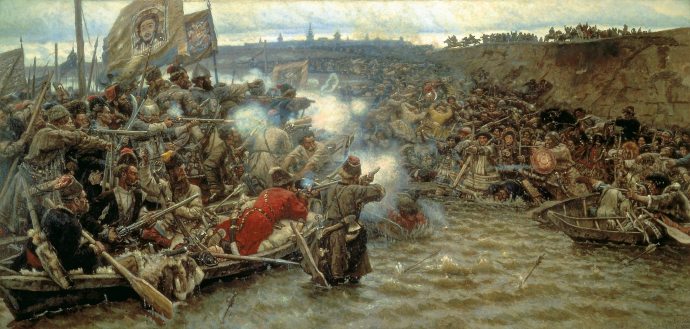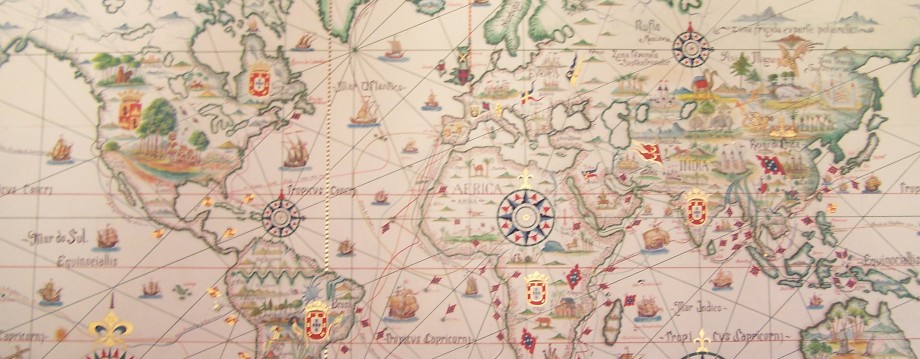It’s been a while, I know, but don’t worry I’m back in business and guess what?!? Only 264 days left 😀
Almost each time I talk to someone about my travel plans I can see confusion on their faces when I say I want to go to Uzbekistan… Why would I go there??? To most of the people this name sounds… exotic. But people who read Marco Polo’s Description of the World or anything about the Silk Road know how crucial that area was for caravans heading west.

The Silk Road
I’m going to focus only on Samarkand this time, but don’t worry, Uzbekistan will re-appear on my blog. The city was founded in 8th-7th century BC on a hill called Afrasiyab and was called Marakanda. In the 6th century BC massive city walls were built by Achaemenids (Persian dynasty which ended their rule thanks to Alexander the Great :D). Yes, Samarkand is as old as the Eternal City. Alexander’s wife, Roxana, came from Samarkand. In 8th century AD Samarkand was conquered by Arabs and Islam became main religion. The next important date in city’s history is 1220 when it was… destroyed by Genghis Khan. But in 14th century it was rebuilt by Timur (also called Tamerlane) who made Samarkand a capital of his empire. In 16th century Samarkand became a part of Bukhara (or Bokhara in 19th and early 20th century in English publications) khanate and went into decline. In 1868 the city came under Russian rule and 8 years later today’s post’s hero appeared on the scene…

Leon Barszczewski in a Russian officer’s uniform
Leon Barszczewski (impossible to pronounce, I know :D) was born on 18th (or 20th) February 1849 in Warsaw as a son of a nobleman from Suwalki. His family had to leave Podlasie region to avoid repressions after Spring of Nations in 1848. From Warsaw the family moved to Biala Cerkiew in Ukraine, where soon after Leon’s parents died. After that him and his younger brother, Wlodzimierz, were placed in a boarding school, which was a common way of dealing with polish orphans from politically incorrect families. How right the Russian regime was – in 1863 Leon’s five older brothers joined the January Uprising. 😀 Leon went to military school in Kiev and after graduating he joined the Junker Infantry School in Odessa. He didn’t become an officer because of his stubbornness – during the exams he defended polish insurgents from 1863 – a strange thing to do for a soon-to-be Russian officer. He was expelled from school and sent to a regiment in Bessarabia (today’s Moldova and Ukraine). That was actually a good thing for Leon as he learnt there a lot of useful skills like tailoring, shoemaking, carpentry, cooking and even some basic medical skills. He also learnt French and German and unlike his fellow soldiers, who spent their salaries on alcohol and women, he used his money to buy books. Thanks to Nikolai Osipov Leon became a quite proficient photographer. Later in Asia, wherever he went, he always had his portable 10kg camera with him.
In March 1876 Leon and his unit were sent to Bukhara. He was very enthusiastic and excited about it. Vast areas of Central Asia were unknown to Europeans at that time. He was about to see lands conquered by Alexander the Great and Genghis Khan. That’s why he volunteered. He must’ve felt like a 6-year old boy before Xmas… He was given a task of charting new routes to Afghanistan and China. It took them 8 months to get to Samarkand. It will take us a few hours to fly from Istanbul to Tashkent (yes, our plan has changed again 😀 – we’ve added Georgia, Armenia and Turkey to our list).
Barszczewski spent 20 years in Samarkand, he met there Irena Niedzwiedzka, whom he married in 1880 and who died 10 years later, leaving Leon with five children. During those 20 years he organized or took part in over 20 scientific expeditions. He found deposits of turquoise, graphite, garnet, rhinestone, iron, lead, silver, coal, gold and naphtha. Because of his scientific reports many Russian scientists arrived in Samarkand to join one of Leon’s expeditions. He was fascinated by glaciers, he organized a few trips just to describe and photograph them. He almost lost his life during one of those trips while… taking a picture. But it was worth risking his life – those photographs won him a gold medal at the exhibition in Paris in 1895. His second gold medal was won in Warsaw in 1901 for landscapes and portraits of inhabitants of Central Asia.

A photograph taken in Samarkand
Through his expeditions he got to know peoples of Central Asia. He was often saying that one can solve a lot of problems with a kind word or just by being polite. Thanks to this approach we can admire scenes from the past in photographs taken by Barszczewski. Apart from taking pictures Leon was collecting ceramics. Over the years he built quite a collection. That’s how he made a discovery that puts him together in one line with Heinrich Schliemann (discoverer of Troy) or Arthur Evans (a man who discovered a palace in Knossos). One day Leon saw young boys throwing stones at old-looking vases. For a few pennies they showed him a place where they found them. First, he thought he found an old city founded by Alexander and destroyed by Mongols in 13th century. In a short period of time he dug out more ceramics, statues and a silver box with pearls and jewellery made of gold.

Leon Barszczewski in his office
Before starting the second phase of excavations he read all available historical sources but still had no idea how big his discovery was. He excavated a few streets, houses and found objects that could be more than 2000 years old. He realized it was a part of a bigger settlement. Neither Moscow nor Petersburg were interested in Leon’s discoveries, but someone else was. French archaeologists wanted to buy from Barszczewski all the items. Only part of the collection was sold and funds were used by Leon to open a coal mine. The rest of exhibits were donated to the city of Samarkand to start a museum. Until death Barszczewski had no idea he discovered ancient Samarkand.

Afrasiyab (Marakanda)
Thorough excavations took place in 1960s and 1970s led by Soviet archaeologists. Of course none of the books published as a result had mentioned Barszczewski as a discoverer. Who would care about some Pole…
Leon’s service brought many benefits to the Empire. He found many geological layers, was a member of a Russian Geographical Society and Geological and Botanical Society, awarded with many awards and medals e.g. Golden Star of Bukhara from Emir. Was promoted to lieutenant colonel and his future seemed very bright. He was offered a promotion to general if he converted to Eastern Orthodoxy. Apparently he answered with a telegram: I refuse to convert. I’m a Polish catholic…
Probably that was the reason for sending Barszczewski away from his beloved Central Asia to Siedlce in today’s Poland. It wasn’t easy for the Barszczewskis, of course they could speak Polish but with a strong accent, and that fact wasn’t helping to assimilate. Also, after so many years spent in Tsar’s service I think he was a bit torn between Poland and Russia. He was very surprised when at the breakout of Russo-Japanese War in 1904 his speech about sense of duty given in Russian had little effect on inhabitants of Siedlce… When he founded a Trade School for girls (he used profits from his coal mine for that purpose), out of 200 girls that enrolled in only 16 showed up on the first day… Eventually a high level of education encouraged more girls to join.
In 1906 Leon retired but his life as a pensioner was rather short. On 22nd March 1910, wrongly accused for stealing military money he committed suicide at a hotel in Czestochowa. He was buried at the local cemetery but was exhumed in 1995 and moved to Stare Powazki in Warsaw.

Barszczewski’s tomb at Stare Powazki cemetery
He left a few hundred photographs showing life of Central Asian inhabitants in 19th century. Apparently he also had a talent for writing, but his notes are either missing or are impossible to decipher. His heir, Igor Strojecki is looking after what’s left. In recent years exhibitions were organized in a few major Polish cities, showing Leon Barszczewski’s life achievements.
Samarkand has become a very popular place amongst foreign tourists but I’m sure, if you leave the city behind you, you will be able to see a true Central Asia, the one Barszczewski loved so much.

Registan with Madrasahs. Contemporary picture








